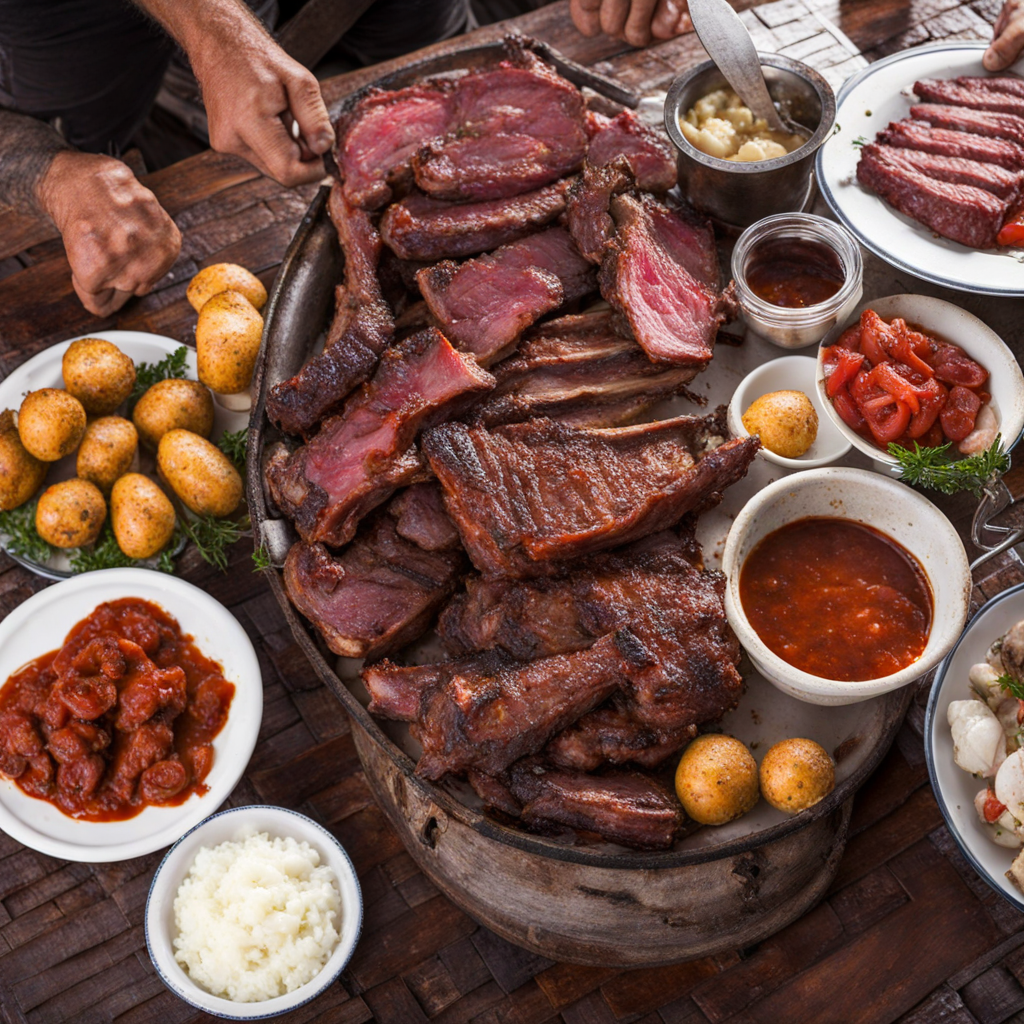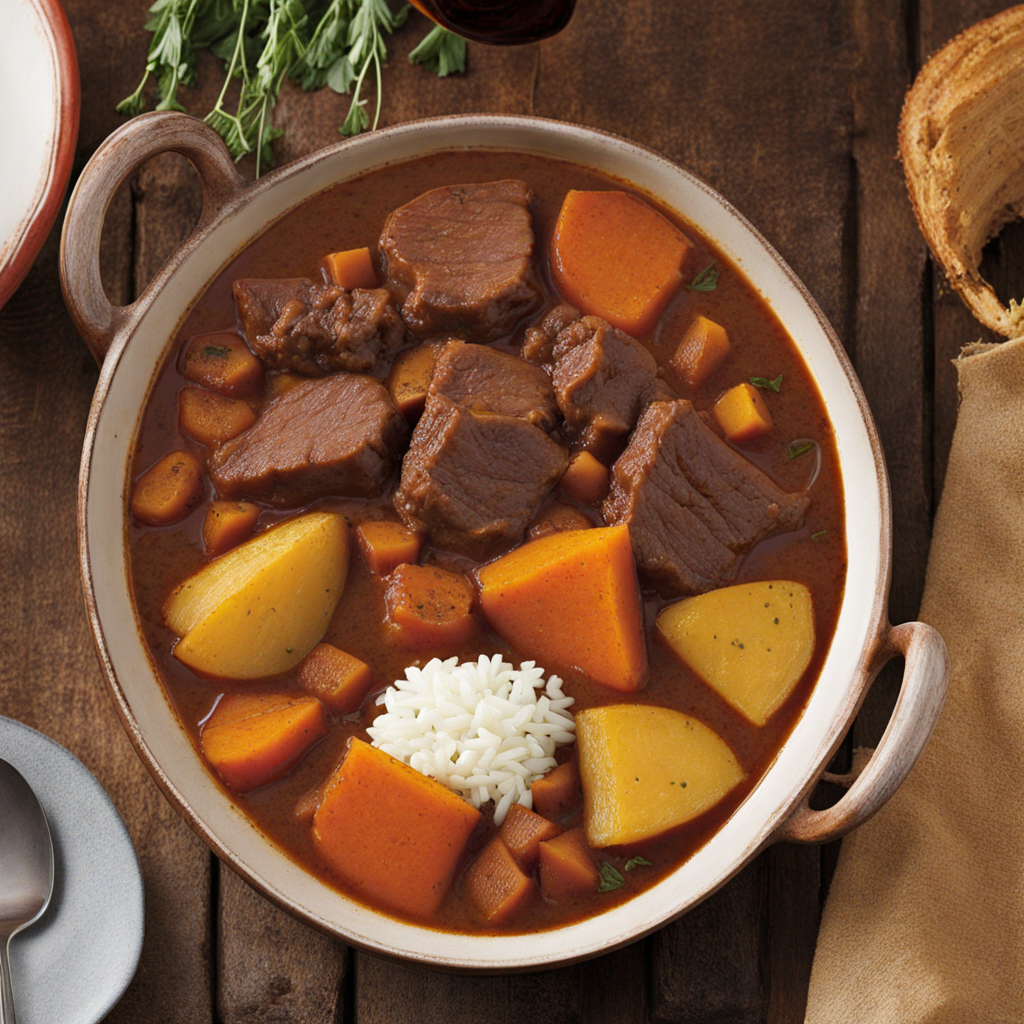Bizcochos
Bizcochos are a beloved traditional pastry hailing from Uruguay, often enjoyed during breakfast or as a delightful snack throughout the day. These flaky, buttery treats come in various shapes and sizes, each one offering a unique texture and flavor. The dough is typically made with simple ingredients like flour, butter, and sugar, which are skillfully combined to create a rich, tender pastry. The result is a golden-brown exterior that is slightly crisp, giving way to a soft, airy interior that melts in your mouth with every bite. One of the charming aspects of bizcochos is their delightful variety. They can be sweet or savory, with popular fillings that include cheese, dulce de leche, or even anise. Sweet bizcochos are often topped with a sprinkle of sugar or a glaze, while savory options might feature a sprinkle of sesame seeds or a sprinkle of cheese on top. This diversity allows for endless pairings, whether enjoyed alongside a steaming cup of coffee or tea, or as a standalone treat perfect for any time of day. In Uruguayan culture, bizcochos hold a special place, often being shared among friends and family during gatherings or celebrations. They embody the warmth of home-baked goodness and the joy of sharing delicious food with loved ones. For anyone looking to explore new culinary horizons, indulging in bizcochos provides a delightful journey into the heart of Uruguayan cuisine, showcasing the simple yet profound flavors that define this charming country.
How It Became This Dish
The History of Bizcochos in Uruguay Origins and Early Influences Bizcochos, a beloved Uruguayan pastry, have become an integral part of the country's culinary identity. Their origins can be traced back to the colonial era, drawing influences from Spanish and Italian cuisines that permeated the region during the late 19th and early 20th centuries. The term "bizcocho" itself, which translates to "biscuit" in English, reflects a broader tradition of baked goods that spans across various cultures. The early settlers of Uruguay brought with them a wealth of culinary practices. The Spanish introduced a variety of baked goods, while Italian immigrants added their unique flair, resulting in a hybrid pastry that would evolve into the bizcochos we know today. Initially, these pastries were simple, made with basic ingredients like flour, sugar, and fat, but they quickly adapted to local tastes and ingredients. Cultural Significance in Uruguayan Society Bizcochos have transcended their humble beginnings to become a symbol of national identity in Uruguay. They are not just a treat; they hold cultural significance and are often associated with social gatherings, celebrations, and everyday life. Commonly enjoyed during breakfast or as a snack, bizcochos are typically found in bakeries across the country, where they are freshly baked and served warm. The communal aspect of enjoying bizcochos is central to their charm. Families and friends gather over a plate of these pastries, often paired with mate, a traditional herbal tea. This ritual of sharing reflects the Uruguayan ethos of hospitality and community, where food serves as a bridge for conversation and connection. Types of Bizcochos Bizcochos come in various forms and flavors, each with its own distinct characteristics. The two primary categories are sweet and savory bizcochos. Sweet bizcochos are often glazed or filled with ingredients such as dulce de leche, a traditional caramel-like spread, while savory versions may incorporate cheese, ham, or olives. Among the most popular types of bizcochos are the "bizcochos de grasa" (fat cookies), which are made with lard or butter, resulting in a flaky texture. Another favorite is the "bizcochos de manteca," which are richer and more buttery. The "facturas," a type of sweet pastry that includes fillings and toppings like jam, chocolate, or cream, has also been embraced in Uruguayan bakeries, showcasing the influence of Argentine pastry traditions. Development Over Time As Uruguay has evolved, so too has the bizcocho. The 20th century saw significant changes in baking technology and ingredient availability, leading to the mass production of these pastries. Bakeries began to experiment with new flavors and fillings, incorporating local ingredients and flavors that resonated with the Uruguayan palate. During the mid-20th century, with the rise of industrialization, many bakeries adopted mechanized processes, allowing for greater consistency and production efficiency. This shift made bizcochos more accessible to the general public, and they quickly became a staple in households across the country. In recent decades, there has been a renewed interest in artisanal baking and traditional recipes. Many bakers are now returning to time-honored methods, emphasizing the use of high-quality ingredients and traditional techniques. This resurgence has not only elevated the status of bizcochos but has also sparked a trend toward innovation, with new flavors and fillings appearing on the market. Bizcochos in the Modern Era Today, bizcochos are more than just a nostalgic treat; they are a canvas for culinary creativity. Bakeries across Uruguay are experimenting with fusion flavors, combining traditional bizcochos with international influences. For instance, one may find bizcochos filled with exotic fruits or infused with spices from Asian cuisine. This evolution showcases the dynamic nature of Uruguayan gastronomy, where traditional and contemporary flavors coexist. Moreover, the globalization of food culture has led to an increased interest in Uruguayan cuisine abroad. Bizcochos have made their way into the diaspora, where they are celebrated at gatherings and cultural events, reinforcing a sense of identity and belonging among Uruguayans living overseas. Social media has also played a significant role in popularizing these pastries, with food enthusiasts sharing recipes, tips, and photos, further embedding bizcochos into the cultural consciousness. Conclusion In conclusion, bizcochos hold a special place in the hearts and palates of Uruguayans. From their colonial roots to their modern-day iterations, these pastries embody the rich tapestry of Uruguayan culture and history. They tell a story of adaptation, resilience, and community, reflecting the diverse influences that have shaped the nation’s culinary landscape. As Uruguayans continue to enjoy and innovate upon this cherished pastry, bizcochos remain a delicious testament to the country's heritage, a sweet reminder of the past, and a symbol of the vibrant culinary future that lies ahead. Whether enjoyed at breakfast, during a celebration, or simply as a treat, bizcochos encapsulate the spirit of Uruguay—warm, inviting, and deeply rooted in tradition.
You may like
Discover local flavors from Uruguay







